

St. Basils
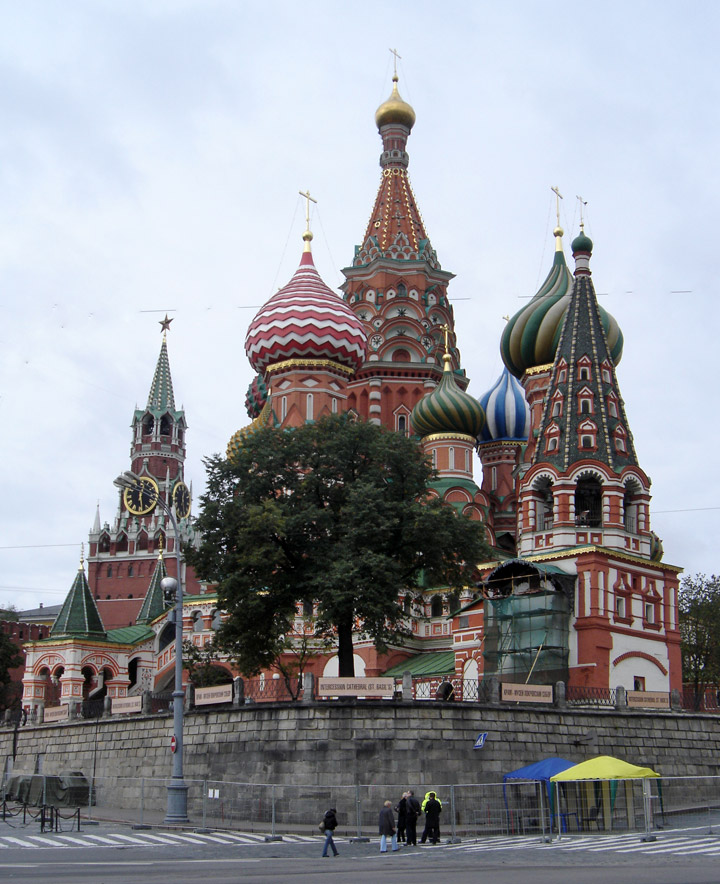
Cathedral of Saint Basil
The Cathedral of Intercession of the Virgin on the Moat (Russian: Собор Покрова что на Рву or simply Pokrovskiy Cathedral, better known as the Cathedral of Saint Basil the Blessed or Saint Basil's Cathedral - Russian: Собор Василия Блаженного) is a multi-tented church on the Red Square in Moscow that also features distinctive onion domes. The cathedral is traditionally perceived as symbolic of the unique position of Russia between Europe and Asia.

The cathedral was commissioned by Ivan IV (also known as Ivan the Terrible) and
built between 1555 and 1561 in Moscow to commemorate the capture of the Khanate
of Kazan. In 1588 Tsar Fedor Ivanovich had a chapel added on the eastern side
above the grave of Basil Fool for Christ (yurodivy Vassily Blazhenny), a Russian
Orthodox saint after whom the cathedral was popularly named.
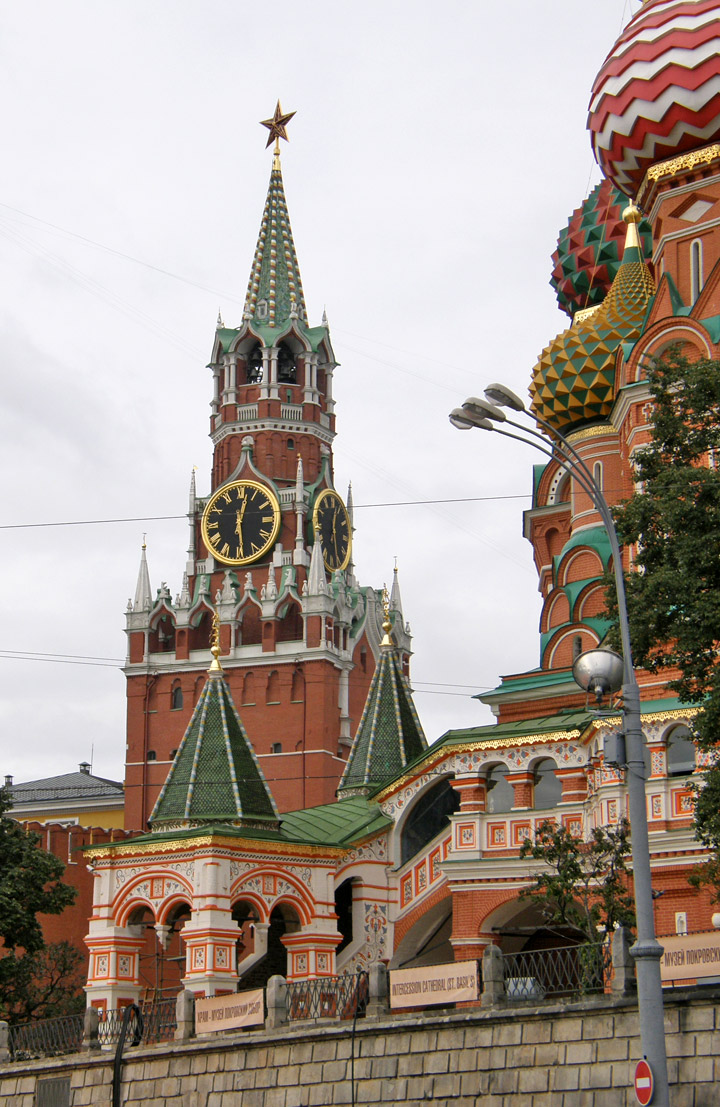
Spasskaya Tower of the Kremlin on the left
Saint Basil's is located at the southeast end of Red Square, just across from the Spasskaya Tower of the Kremlin. Not particularly large, it consists of nine chapels built on a single foundation. The cathedral's design follows that of contemporary tented churches, notably those of Ascension in Kolomenskoye (1530) and of St John the Baptist's Decapitation in Dyakovo (1547).
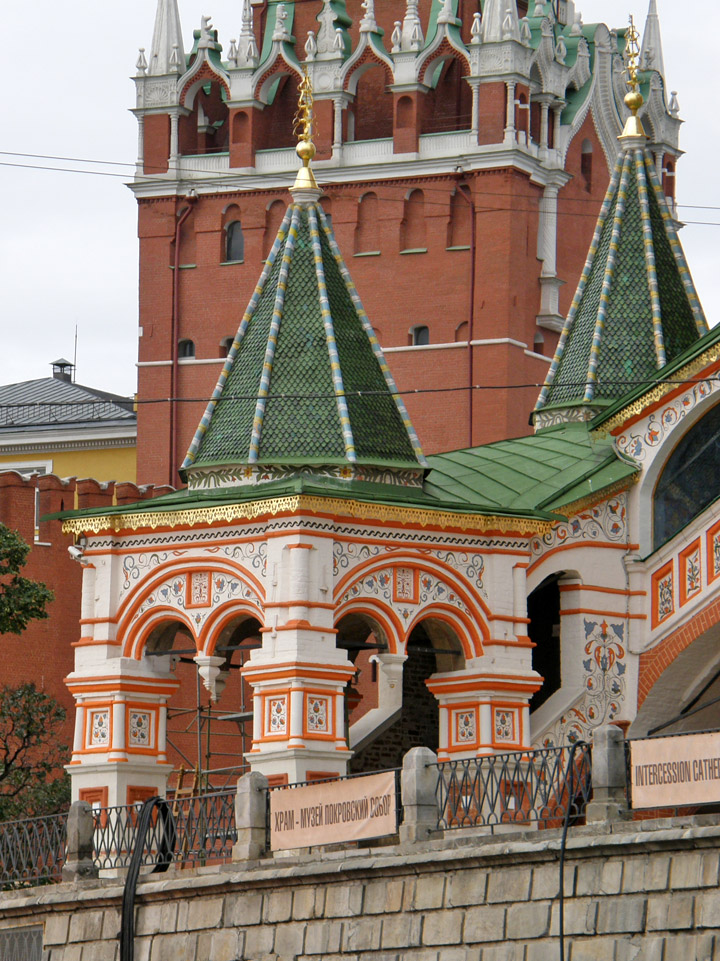
In a garden at the front of the cathedral stands a bronze statue commemorating
Dmitry Pozharsky and Kuzma Minin, who rallied Russia's volunteer army against
the Polish invaders during the Time of Troubles in the late sixteenth and early
seventeenth centuries. The statue was originally constructed in the center of
Red Square, but the Soviet government felt it obstructed parades and moved the
statue in front of the cathedral in 1936.
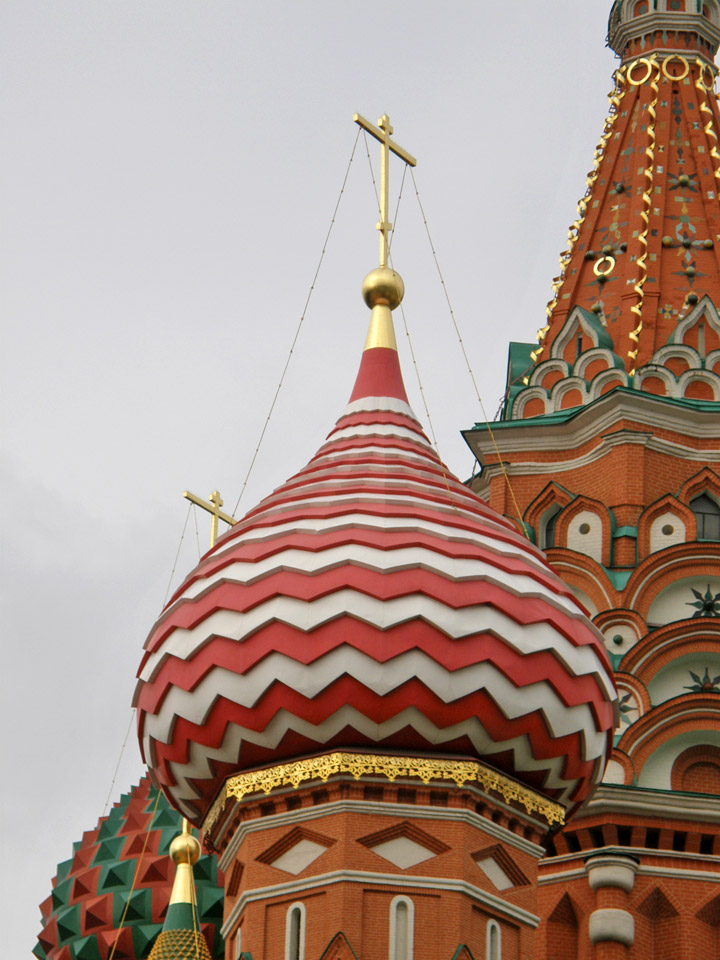
The initial concept was to build a cluster of chapels, one dedicated to each of
the saints on whose feast day the tsar had won a battle, but the construction of
a single central tower unifies these spaces into a single cathedral. A popular
but untrue legend says that Ivan had the architect, Postnik Yakovlev, blinded to
prevent him from building a more magnificent building for anyone else.

It has been recently speculated that certain elements of Timurid monuments in
Samarkand or of Kazan Qolsharif mosque were pictured in this cathedral, because
this mosque was the main symbol of Khanate of Kazan. The original look of the
mosque is unknown, however.
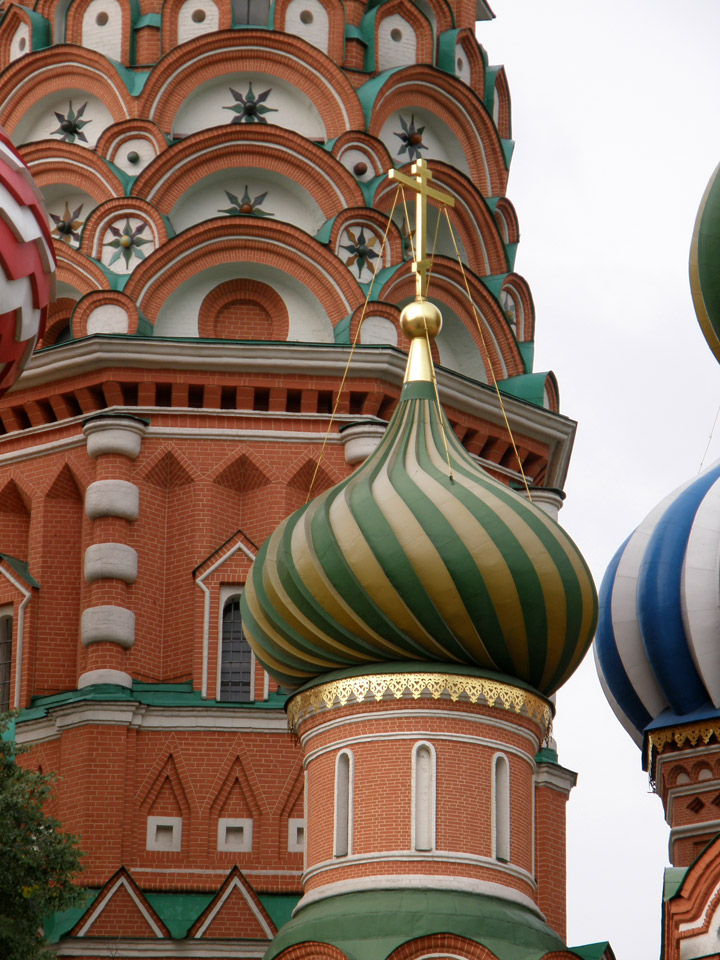
Saint Basil's Cathedral should not be confused with the Moscow Kremlin, which is
situated right next to it on Red Square. It is not at all a part of the Moscow
Kremlin. However, many publications do make the mistake of calling this
structure the Kremlin. The misconception has inadvertently been reinforced by
Western television journalists, who have often stood in front of St. Basil's
during their reports.
Text from Wikipedia
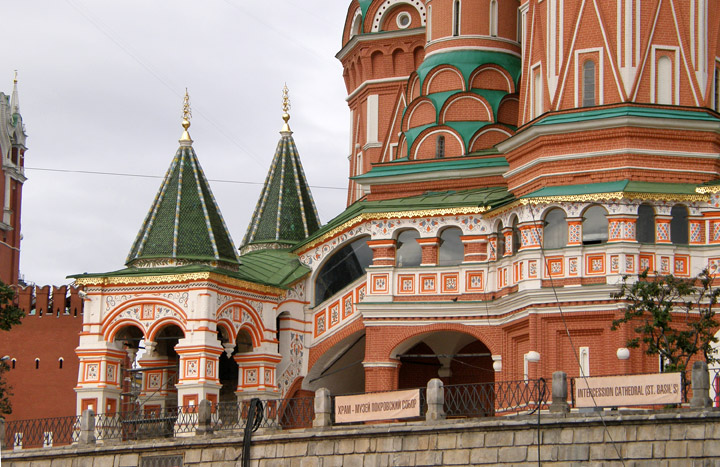
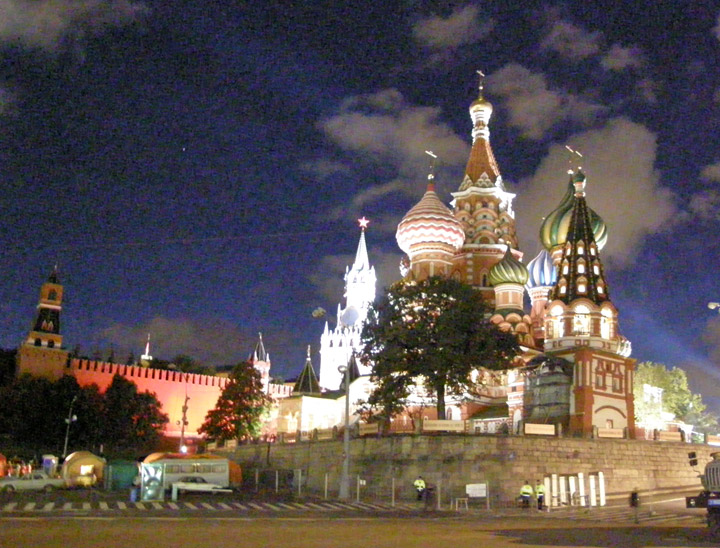
at night